Prealloyed Mo low-alloy steel powders and the flexibility of hybrid alloys
Introduction
Water atomised prealloyed powders that use molybdenum as their principal alloy addition were introduced commercially in 1990 [1]. They were developed via a series of experiments and a composition with 0.85% molybdenum was selected for commercialisation because it offered excellent compressibility coupled with good hardenability. When mixed with graphite the material is well suited for applications that require quench-hardening and tempering.
Because of its good compressibility, the powder was soon the base for hybrid alloys in which the base was combined with additions of nickel, copper, or both nickel and copper [2]. A powder with higher molybdenum content (1.5%) was introduced in Europe as both a prealloyed powder and the base for diffusion-alloyed powders [3]. The lower compressibility (see Fig. 1) and higher cost of the 1.5% molybdenum powder (even at that time) resulted in little interest in the North American market but the diffusion alloys were used for some applications in Europe and Asia.
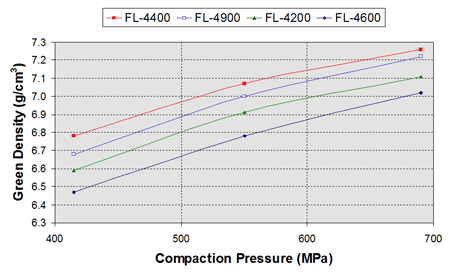
Fig. 1 Compressibility of some water atomised, prealloyed powders
(FL-4400 = 0.85% Mo; FL-4900 = 1.5% Mo; the others are Ni-Mo prealloys)
In recent years, the considerably higher cost of molybdenum has led to the commercialisation of prealloyed powders with lower molybdenum contents (both 0.5% and 0.3% Mo) and these powders now form the base for various hybrid alloys. Hybrid alloys based on 0.5% molybdenum are now standard materials in MPIF Standard 35 – Materials Standards for PM Structural Parts [4]. These materials were first introduced in 1999 [5 and 6]. Subsequent developments based on prealloyed molybdenum steels include PM-Cr steels and PM-Mn steels [7-12].
Quench-hardened and tempered properties
Prealloyed powders that use molybdenum as their principal alloy addition are particularly well suited for applications where the PM parts need to be oil-quenched and tempered. The hardenability of the materials is a function of their molybdenum content (Fig. 2).
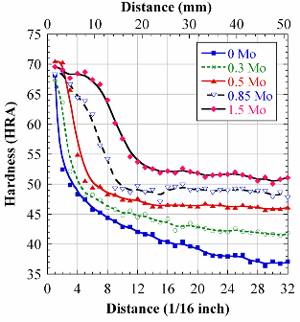
Jominy end-quench hardenability for materials
with 0.6% graphite
Lindsley has shown that a 25 mm diameter compact, 25 mm high, made using a prealloyed powder with 0.3% molybdenum, through hardens at graphite addition levels as low as 0.6% (Fig. 3) [13]. At lower levels of graphite, the compacts no longer through harden but have a hardness profile with a high surface hardness (martensite) and a softer core (mixed martensite/bainite/unresolved pearlite).
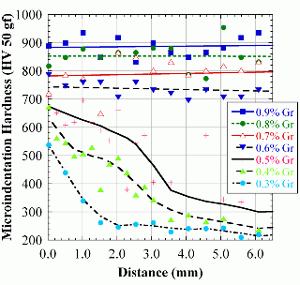
Fig. 3 Microindentation hardness profiles of oil
quenched 25 mm diameter compacts with
0.3% molybdenum and various graphite additions
As the molybdenum content is increased, the graphite addition required to through harden the 25 mm diameter compacts is reduced (Fig. 4). The average microindentation hardness level for each molybdenum-graphite combination in these through hardened compacts is also listed in Fig. 4. The decrease in microindentation hardness as the graphite addition decreases is apparent; martensite hardness is a function of its carbon content. The compact made from a base iron powder (0% Mo) did not through harden so the microindentation hardness of its case is shown.
The samples in the referenced study were 25 mm in diameter. Part size should be kept in mind when determining the molybdenum content that is needed to through harden at a given carbon content. Smaller parts would not require the same molybdenum content for them to through harden. Larger parts would need greater hardenability and higher molybdenum content leads to increased hardenability (Fig. 2).
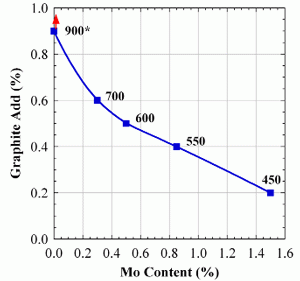
Fig. 4 Minimum graphite contents required for
through hardening oil quenched cylindrical compacts
of 25 mm diameter made using various molybdenum
prealloys. The average microindentation hardness
is given for each Mo-graphite combination.
* Note that the material with zero molybdenum did
not through harden at 0.9% graphite and the
microindentation hardness value listed is from the
There is little difference in the compressibility of the prealloys with 0.3, 0.5, and 0.85% Mo but the compressibility of the powder with 1.5% Mo decreases by about 0.08-0.1 g/cm3.
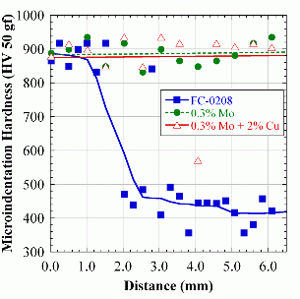
Fig. 5 Microindentation hardness profiles from
the edge (distance = 0) toward the centre
of oil quenched, 25 mm diameter compacts with
0.9% graphite
Although copper steels are the workhorses of the powder metallurgy industry, they have limited hardenability and little ductility after heat treatment. When the microindentation hardness of a quench-hardened 25 mm diameter compact made from FC-0208 was compared with that for compacts made from a 0.3% Mo prealloyed powder, the difference in hardenability is readily apparent (Fig. 5) [13]. The FC-0208 compact has a hard case to a depth of less than 2 mm whereas the compacts made from the prealloyed powder through harden. Hanejko has shown that the dimensional change of the 0.3% Mo prealloyed material is less sensitive to density variation than FC-0208 [14].
Heat-treated PM gears made from FC-0208 showed greater scatter in dimensional change compared with the same gears made using a 0.3% prealloyed Mo steel powder.
Hybrid analogs of diffusion alloys based on an iron powder
As previuosly stated, hybrid alloys based on 0.5% molybdenum were first introduced in 1999 [5 and 6]. They are now standard materials in MPIF Standard 35 – Materials Standards for PM Structural Parts [4].
At the same sintered carbon content, these hybrid materials have higher tensile strength than the diffusion alloys based on an iron powder in the as-sintered condition. While the materials have the same chemical composition, the hybrid alloys, made with a prealloyed powder base, have greater hardenability than their diffusion-alloyed analogs (Fig. 6) [4,15].
This makes them much better than the diffusion alloys based on an iron powder for applications where the PM parts need to be heat treated.
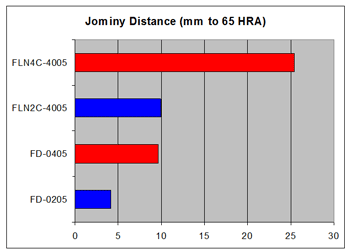
Fig. 6 Jominy hardenability comparison between diffusion-alloyed materials based on iron powder (FD-0205 and FD-0405) and hybrid low-alloy powders based on a prealloyed powder with 0.5% Mo (FLN2C-4005 and FLN4C-4005)
In general, the ultimate tensile strength of the quench-hardened and tempered lower nickel content materials is better than that of the materials with 4% nickel. This is due to higher amounts of retained austenite in the material with 4% nickel. The only reason for selecting the diffusion-alloyed material with 4% nickel would be for its better hardenability or slightly better impact energy. As the hardenability of the hybrid alloy with the lower nickel content is similar to that of the diffusion-alloyed material with 4% nickel, the hybrid alloy with the lower nickel content would be a more cost-effective choice.
PM manganese steels
The ferrous PM industry continues to develop and expand its use of non-traditional PM alloying elements. Price, environmental, and recyclability concerns with Mo, Ni and Cu have driven this expansion. Manganese is a relatively inexpensive, yet effective, alloying element in wrought steels. Nevertheless, oxygen sensitivity has limited the use of manganese in PM steels in the past. The current nitrogen-hydrogen sintering atmospheres with low partial pressures of oxygen now permit its use. The combination of Mn with a moderate level of Mo results in PM steel alloys with mechanical properties approaching those of FD-0405.
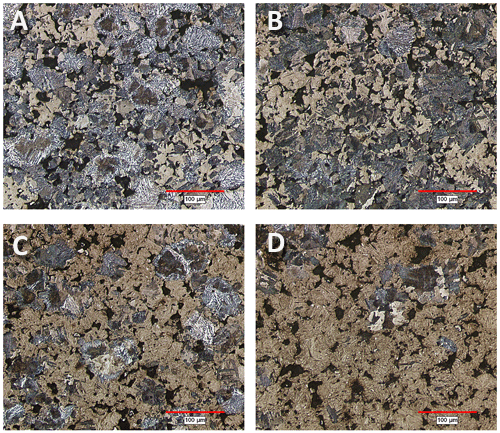
Fig. 7 Microstructures of the two PM manganese steels. Conventional cooling rate (0.7 ºC/s) for (a) and (b) and accelerated cooling (1.6 ºC/s) for (c) and (d). ANCORBOND FLM-4005 = (a) and (c)
ANCORBOND FLM-4405 = (b) and (d)
Equally important, these alloys can be processed under typical, industrial sintering conditions. At higher carbon contents these manganese steels can be used as lean alloy, sinter-hardening grades as has been demonstrated by Lindsley and James [11, 12]. The microstructures of two PM manganese steels are presented in Fig. 7. The ANCORBOND FLM-4405 material has a greater hardenability than the ANCORBOND FLM-4005 and this is reflected in the microstructures; there is a higher percentage of martensite present in the ANCORBOND FLM-4405 at both cooling rates.
Conclusions
Since their introduction twenty years ago, prealloyed water atomised powders with molybdenum as their principal alloying element have become the widely used prealloyed low-alloy steel powders. They provide great flexibility in ferrous PM material design. They are used not only for their quench-hardened and tempered properties but also serve as the base for a wide range of hybrid low-alloy PM materials; analogs of the diffusion alloys that are based on iron, analogs of the diffusion alloys that are based on molybdenum prealloys, in PM chromium steels, and in PM manganese steels.
Contact
W. Brian James and Kalathur S. Narasimhan
Hoeganaes Corporation
Cinnaminson, NJ
USA
www.hoeganaes.com
References
[1] J.J. Fulmer and R.J. Causton, “Tensile, Impact, and Fatigue Performance of a New Water Atomised Low-Alloy Powder – Ancorsteel 85 HP”, Advances in Powder Metallurgy,1990, Volume 2, compiled by E.R. Andreotti and Patrick J. McGeehan and published by MPIF, p. 459.
[2] Hoeganaes Corporation, Technical Data Sheet for Ancorsteel 85 HP, February 1991.
[3] Höganäs AB, Iron and Steel Powders for Sintered Components – PM 94-2.
[4] MPIF Standard 35, Material Standards for PM Structural Parts – 2009 edition.
[5] F.J. Semel, “Ancorloy Premixes: Binder_Treated Analogs of the Diffusion-Alloyed Steels”, Advances in Powder Metallurgy & Particulate Materials, 1999, compiled by Charles L. Rose and Martin Thibodeau and published by MPIF, Princeton, NJ,
Vol. 2, p. 7-93.
[6] W. Brian James, “The Development of Engineered Binder-Treated Alternatives to Diffusion-Alloyed Powders”, presented at 2nd International Latin American Conference on Powder Technology, November 10-12, 1999, Foz do Iguacu, Brazil.
[7] Patrick King, “Chromium Containing Materials for High Strength-High Fatigue Applications”, Proceedings of the PM2004 World Congress, Vol. 3, published by EPMA, pp. 164-169.
[8] Patrick King and Bruce Lindsley, “A New Cr-Bearing Alloy for High Performance Applications”, Advances in Powder Metallurgy & Particulate Materials – 2005, compiled by Candido Ruas and Ted A. Tomlin, published by MPIF, Part 7,
pp. 12-21.
[9] Bruce Lindsley, “Sintering of Chromium Containing PM Steels Processed to High Density”, Advances in Powder Metallurgy & Particulate Materials – 2008, compiled by Roger Lawcock, Alan Lawley, and Patrick J. McGeehan, published by MPIF, Part 5, pp. 150-160.
[10] Patrick King and Bruce Lindsley, “Chromium Steels for High Performance PM Applications”, Advances in Powder Metallurgy & Particulate Materials – 2007, compiled by John Engquist and Thomas F. Murphy, published by MPIF, Part 7,
pp. 1-11.
[11] Bruce Lindsley and W. Brian James, “PM Steels that Contain Manganese”, Advances in Powder Metallurgy & Particulate Materials – 2010, compiled by Matthew Bulger and Blaine Stebick, published by MPIF, Part 10, pp. 36-49.
[12] Bruce Lindsley and W. Brian James, “PM Steels that Contain Manganese”, proceedings of PM2010 Powder Metallurgy World Congress, Florence, Italy, October 2010, Volume 3, Sintered Steels, pp. 151-158.
[13] Bruce Lindsley and Howard Rutz, “Effect of Molybdenum Content in PM Steels”, Advances in Powder Metallurgy & Particulate Materials – 2008, compiled by Roger Lawcock, Alan Lawley, and Patrick J. McGeehan, published by MPIF, Part 7,
pp.26-34.
[14] Francis G. Hanejko, “A Comparison of FC-0208 to a 0.3% Molybdenum Prealloyed Low-Alloy Powder with 0.8% Graphite”, Advances in Powder Metallurgy & Particulate Materials – 2009, compiled by Thomas J. Jesberger and Stephen J. Mashl, published by MPIF, Part7, pp. 59-72.
[15] W. Brian James, Bruce Lindsley, Howard G. Rutz, and Kalathur S. Narasimhan, “Lean Hybrid Low-Alloy PM Molybdenum Steels”, proceedings of Euro PM2009, October 12-14, 2009, Copenhagen, Denmark, published by EPMA.
News | Articles | Market reviews | Search directory | Subscribe to e-newsletter
Published on www.ipmd.net
News, articles and a fully searchable directory for the powder metallurgy industry





